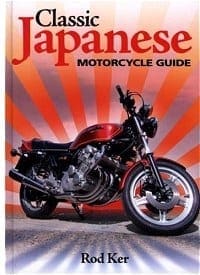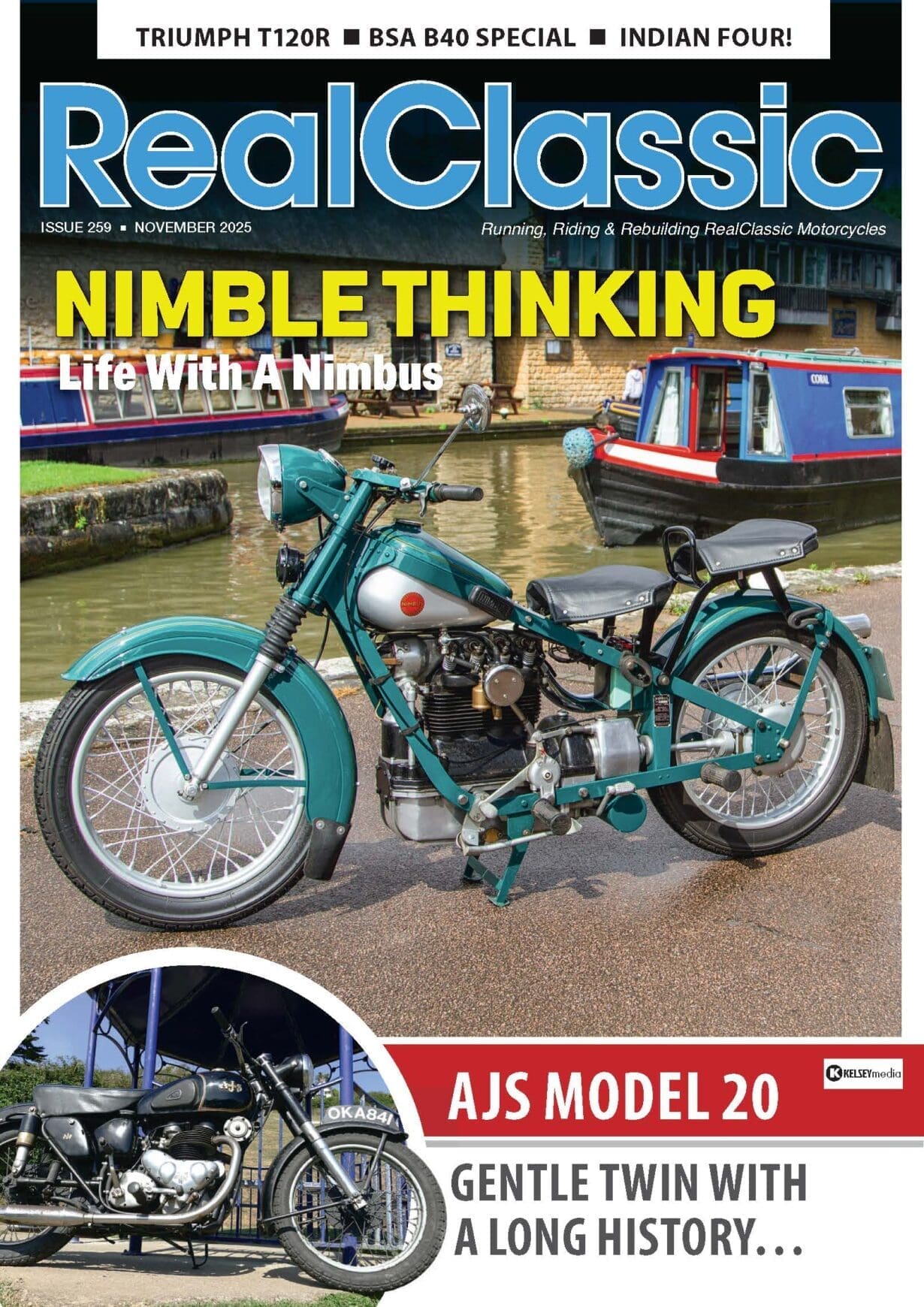
Enjoy more RealClassic Magazine reading every month.
Click here to subscribe & save.
Dave Blendell doesn’t like bike books. Great! We’ll get him to review this book by a RealClassic writer then…
First off, a confession. I’m not actually a fan of motorcycle books. Books about people’s adventures on motorbikes: yes. Interesting travel books featuring a motorcycle as the means of transport: again, yes, and I’ve read many entertaining examples of both.
Apart from those, motorcycle books tend to be either the dry witterings of some anorak under the impression that his obsession with facts, figures and indeed correct rivet-accountancy is shared with anyone in the known universe, or ‘coffee table’-type offerings; fancy pictures but as entertaining and accurate as the Virgin Rail timetable.
Who better than me, then, to ask to do a review of a new book about motorcycles?
|
At first glance Rod Ker’s ‘Classic Motorcycle Guide’ does look like a rather small coffee table-type offering. As one of my few pieces of furniture is a rather small coffee table I guess this could be considered a good omen. Cover shot: CBX against a rising sun logo; quick flip through loads of nice colour pics. There’s the 400/4, GT750, Z900, Z1300… seen all this before… there will be a V-Max somewhere… ah, here it is! Hang on, rewind. Z400, CB200, a couple of nice Honda trail bikes — now he’s got my interest. A bit more ‘dipping’ and I’m hooked. Refreshingly, Rod Ker’s book doesn’t just focus on the glamorous offerings from the various Japanese companies in days gone by. Instead, everything from sports mopeds to commuters to middleweights; the good, the bad and the downright horrible features here. I particularly enjoyed the way the author wrote with as much obvious enthusiasm and attention to detail about, as an example, the Kawasaki 90-175cc trail bikes as he does the better-known machinery, the Honda Fours, Suzuki Katanas, etc. The first three chapters cover the birth of the Japanese motorcycle industry and set the tone for the rest of the book; well-researched, plenty of fascinating archive pictures and entertaining as well as informative. We then move on to read about the conquering of foreign markets and some of the many innovations the Japanese companies brought to the world of motorcycling. I was particularly interested to see some good examples of contemporary advertising, and amazed to read that Honda apparently thought it necessary to tell the world that their workers were treated and paid properly in adverts in the bike press of the day — thanks to the rampant xenophobia of the times — balanced I suppose by the blatantly sexist advert for one of their mopeds that appears a few pages later! |
Random FS1E Stuff on eBay.co.uk |
|
What follows, and fills the bulk of the book, is a marque-by-marque potted history of the Japanese companies output from roughly the mid-Sixties to mid-Eighties. Big, small, exotic, mundane; if you rode it or saw it in that then era it’s probably mentioned here and more than likely featured in glorious Technicolor as well. Rod Ker’s conversational writing style makes for a relaxing read. He offers opinions while not coming across as a know-all, sprinkles snippets from contemporary magazine road tests into the mix as well as interesting anecdotes and reminiscences from ‘back then’. It prompted a trip down memory lane for me, remembered myself quite liking the Z400 when nobody else did, wondering why the GS550 is forgotten when much lesser machines (usually with Honda written on the tank) are revered, and still wondering why anyone ever bought a Bonneville from the day the XS650 appeared in showrooms over here. A chapter on Sports Mopeds follows — great to see the tiddlers that got so many bikers on the road for the first time given some well-deserved space. After that we move onto ‘1984: the new generation’. Unlike another author, Rod Ker sees this as the significant date when the power-race started, the beginning of the race rep era… something George Orwell missed but then he didn’t have the benefit of hindsight, as Ker does. The book finishes with ‘Future Classics’ and here Rod Ker sticks with convention, FireBlade, R1 etc. These are the models which every glossy mag that’s run a similarly-named feature has included in their list, so personally I could have lived without it. |
Random SS50 Stuff on eBay.co.uk |
It’s not a perfect book and some things rankled. Some models are described in painstaking detail; the GS400 and all it variants, for example, yet others like the more popular and long-lived GS850 get barely a sentence. It might have been more interesting to the average reader to have skipped over the minutiae of something that missed the mark completely, and at least mentioned that it eventually led to the massively popular GS500, a bike which most riders will be aware of — rather than devoting too much space the 400 which was barely a blip on the radar.
There is more than one contradiction from one page to the next. The GT550 Suzuki was a ‘class leader’ for all of two pages until it turns into a waste of time compared to the smaller GT380 (I had both and couldn’t disagree more); the Yamaha XT600 was the first Yamaha single with electric start in 1984… it was kick-start only at that time and for a few years afterwards. Look for Bridgestone in the index and you won’t find it, despite one of the most mouth-watering pictures being their 350 GTO Street Scrambler.
That’s nit-picking though, and on the whole the book is an excellent read. I enjoyed it a lot more than I expected to and read it from cover to cover. I hadn’t intended to do that and certainly didn’t intend to start it within 15 minutes of the postman delivering it — but a quick browse had me up and running. Great pictures, and plenty of them, too.
There is the odd blooper, the occasional repetition but if I hadn’t been writing this review for potential buyers there’s nothing I’d have thought worth mentioning. If you’re a fan of classic Japanese bikes then you’ll love this book. If you’re a die-hard Brit fan you probably spend all your time trying to keep your old nail running and won’t have time to read it anyway.
Good effort, great book. Buy it.
Reviewed by Dave Blendell
The Classic Japanese Motorcycle Guide by Rod Ker
It normally costs £19.99 but you can save around 30% by ordering through Amazon…
Search for books and magazines on
Ebay.co.uk
Search for similar books on Amazon:



